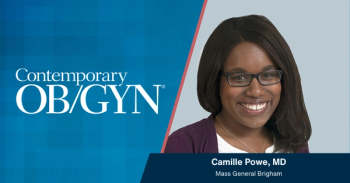
Can Salpingo-Oophorectomy Protect Against Prolapse?
Removal of the ovaries and fallopian tubes at the time of a hysterectomy doesn't increase the risk of pelvic organ prolapse, new research finds.
A bilateral salpingo-oophorectomy at the time of hysterectomy does not increase a woman’s risk of pelvic organ prolapse, a recent study found, suggesting that menopause may not be a primary factor in the development of a cystocele or rectocele.
The retrospective analysis relied on data from nearly 9,000 women who were enrolled in the Women's Health Initiative estrogen-alone trial. The analysis was conducted to evaluate the development of pelvic organ prolapse in postmenopausal women.
Key Points:
- In a surprise finding, bilateral salpingo-oophorectomy at the time of hysterectomy was not related to an increased risk of pelvic organ prolapse.
- In fact, the surgery followed by no hormone therapy
may have a protective effect against the development of prolapse.
- These findings suggest that age,
and not menopause, may be a more relevant factor in
the likelihood of prolapse.
The researchers found that women who retained their ovaries had a 23% higher risk of having a cystocele or rectocele develop than women who had bilateral salpingo-oophorectomy and no subsequent estrogen therapy.
The finding was adjusted for age, number of births, obesity, and ethnicity, the authors noted. In addition, they said the finding suggests there may be a protective benefit against prolapse in undergoing the surgery followed by no hormone therapy.
The authors noted that they were surprised at the finding, adding that they had hypothesized that hysterectomy and prolonged hypoestrogenemia may be associated with an increased risk of prolapse.
In reflecting on the analysis, NAMS Executive Director Margery Gass, MD, suggested a woman’s age, not menopause, may be a more important factor when it comes to the likelihood of prolapse.
The analysis also confirmed some of the other known risks for pelvic organ prolapse. For example, the risk more than doubled for women who had given birth to more than one child. Older age, higher parity, higher body mass index, higher waist-to-hip ratio, and women who were not of African-American ethnicity were all factors associated with increased odds of cystocele or rectocele.
The
Newsletter
Get the latest clinical updates, case studies, and expert commentary in obstetric and gynecologic care. Sign up now to stay informed.











